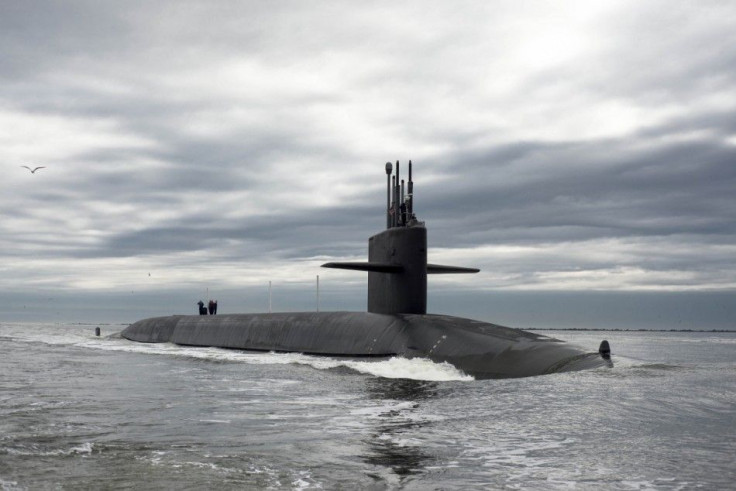US Military To Deploy Robotic Ghosts Ships To Track Submarines: To Tackle Threats From Russia, China And "Rogue States"

Faced with possible threats from Russia, China and some rogue states, the U.S. military is gearing up tos deploy Anti-submarine Warfare Continuous Trail Unmanned Vessel or ACTUV by fall this year. This will be an unmanned robotic ship that will keep a tab on the movements and presence of hostile submarines. The Advanced Research Projects Agency started the project in 2010, to build a 132-foot autonomous boat that can track quiet, diesel-powered submarines.
In March, the ACTUV program had a successful test along a 35-nautical mile stretch of water off Mississippi. This was led by engineering company Leidos and DARPA. They tested the ACTUV’s systems through 100 different scenarios. In the recent test, Leidos conducted the tests on a 42-foot surrogate boat, as they are still finishing the construction of the ACTUV prototype vessel "Sea Hunter" that is due for the actual launch.
The test boat completed an autonomous trip without hitting rocks, shoals or surface vessels. In future tests, ACTUV will tail a boat at a distance of one kilometre. The boat was equipped with off-the-shelf radar components, digital area charts and proprietary software.
More Upgrades Soon
A Naval Technology report quoted DARPA programme manager Scott Littlefield, who said: “We're looking for test-ready, multi-sensor approaches that push the boundaries of today's automated sensing systems for unmanned surface vessels. Enhancing the ability of these kinds of vessels to sense their environment in all weather and traffic conditions, day or night, would significantly advance our ability to conduct a range of military missions.” The extra technologies will equip the robotic ship on three technical areas of maritime perception sensors, maritime perception software and classification software for lights.
Sub-hunting Boat Bots
According to DARPA program manager Ellison Urban, the significance is that Navy's need for sub-hunting boat bots to chase diesel-electric submarines will be addressed. These subs are silent and hard to track from afar. There is also a cost advantage, with each piece costing only $200 million to $300 million.
“Instead of chasing down submarines and trying to keep track of them with expensive nuclear-powered submarines, which is the way we do it now we want to try and build this at significantly reduced cost. It will be able to transit by itself across thousands of kilometers of ocean and it can deploy for months at a time. It can go out, find a diesel-electric submarine and just ping on it,” Urban added.
If all goes well, ACTUVs would cost-effectively monitor ultra-quiet submarines deployed by Russia, China and Iran. Also ACTUVs are not designed to return to land and can spend their entire existence at sea, chasing targets like an autonomous Ahab.
The Mississippi tests clearly showed that the robot ship could execute a difficult military mission without violating any maritime laws. It was also a a proof that big robots can navigate in the open seas along with cruise ships and boats. In the next round of trials, ACTUV will be further tested on how to evade detection by “enemy ships” that may try to block it.
(For feedback/comments, contact the writer at kalyanaussie@gmail.com)





















